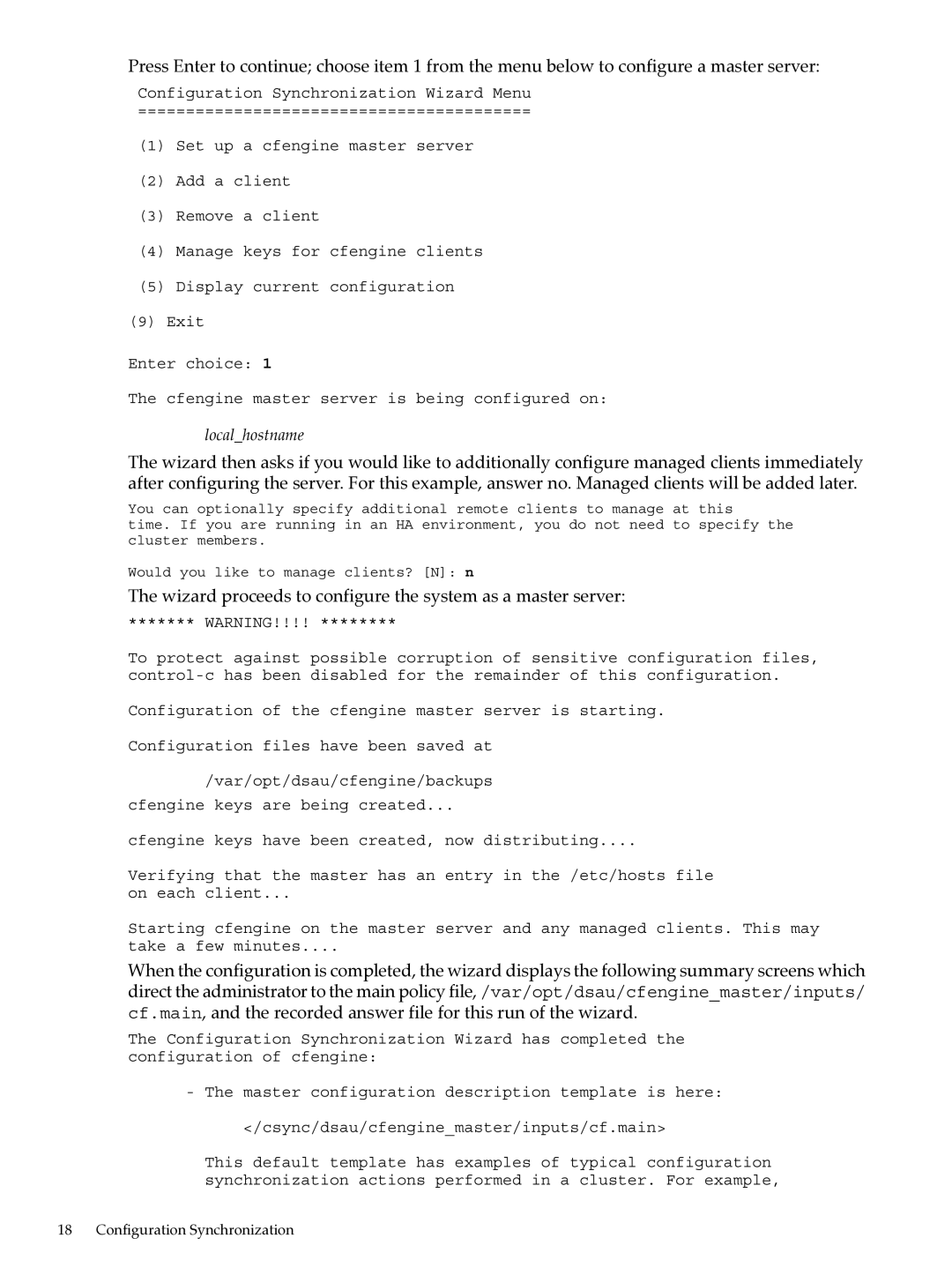Press Enter to continue; choose item 1 from the menu below to configure a master server:
Configuration Synchronization Wizard Menu
=========================================
(1)Set up a cfengine master server
(2)Add a client
(3)Remove a client
(4)Manage keys for cfengine clients
(5)Display current configuration
(9)Exit
Enter choice: 1
The cfengine master server is being configured on:
local_hostname
The wizard then asks if you would like to additionally configure managed clients immediately after configuring the server. For this example, answer no. Managed clients will be added later.
You can optionally specify additional remote clients to manage at this
time. If you are running in an HA environment, you do not need to specify the cluster members.
Would you like to manage clients? [N]: n
The wizard proceeds to configure the system as a master server:
******* WARNING!!!! ********
To protect against possible corruption of sensitive configuration files,
Configuration of the cfengine master server is starting.
Configuration files have been saved at
/var/opt/dsau/cfengine/backups
cfengine keys are being created...
cfengine keys have been created, now distributing....
Verifying that the master has an entry in the /etc/hosts file
on each client...
Starting cfengine on the master server and any managed clients. This may
take a few minutes....
When the configuration is completed, the wizard displays the following summary screens which direct the administrator to the main policy file, /var/opt/dsau/cfengine_master/inputs/ cf.main, and the recorded answer file for this run of the wizard.
The Configuration Synchronization Wizard has completed the configuration of cfengine:
-The master configuration description template is here: </csync/dsau/cfengine_master/inputs/cf.main>
This default template has examples of typical configuration synchronization actions performed in a cluster. For example,
